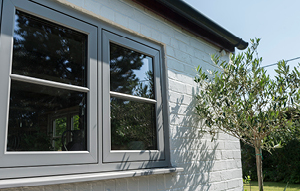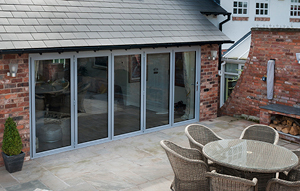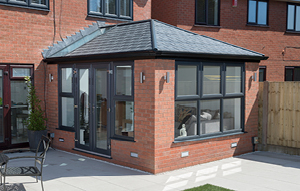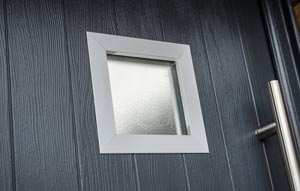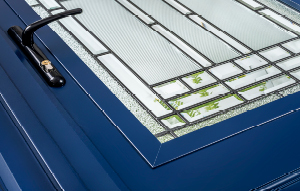How do flush windows and casement windows differ?
We’ll begin by explaining that the casement refers to the moving part of the window, the section that opens and close. A standard or ‘lipped’ window has casements that sit proud of the window surround.
Flush casement windows have casements that are dead level with the frame, which for some, results in a neater and more understated window style. If you view the two window types side by side, you will be able to see the clear differences between the two.
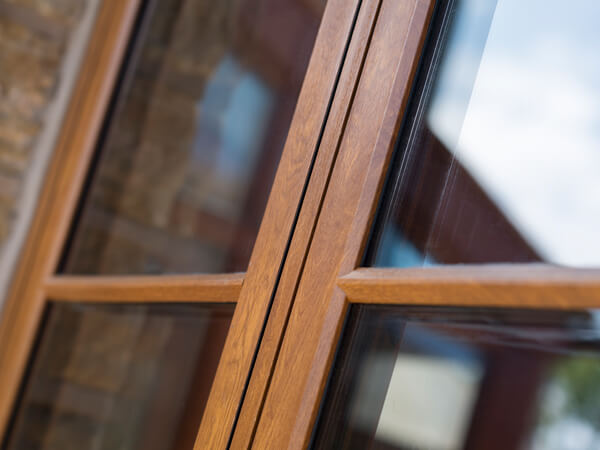
Am I better buying Double Glazed or Triple Glazed Windows?
The main difference between a double and triple glazed window is the number of panes they have, with a triple glazed window having three of them as opposed to two. Both options have their pros and cons, so talk to one of our consultants if you need help with deciding which to buy.
Generally, you will find that triple glazing is a better insulator and good at keeping heat in and keeping the cold out. If a triple glazed window is correctly specified, it can also be good for shutting out external noise, music to the ears of anyone who lives in a busy road and gets regularly disturbed by noise.

MORE COMMON QUESTIONS
You can always direct any questions you have to one of our knowledgeable advisors. Some of the most popular questions they receive are answered below.
What is the difference between PVC Windows, PVCu Windows & UPVC Windows?
We can tell you that there isn’t any difference, and they should actually be called PVC-U windows.
It was in the late 1980’s that UPVC had its name changed in the UK to PVCU for consistency with other European countries. Although, they were calling it PVC-U because European languages mostly place the noun (being PVC in this case) before the adjective (U).
If you didn’t know, ‘PVC’ stands for Poly Vinyl Chloride, with the ‘U’ being an abbreviation for Un-plasticised. Poly Vinyl Chloride can be modified and is regularly used for manufacturing things like bags, shoes, and fake leather. That’s why so many of us are so familiar with the term ‘PVC’.
You cannot use Pure PVC-U to craft replacement windows and doors as it needs some additives to make windows and doors last, offer high weathering and a suitable level of UV resistance. It’s also essential to achieve that trademark white colour.
What window and door colour options are there?
White would previously be one of the very few colour options available for replacement windows and doors, but not anymore as we have just about every available coloured finish.
You may be perfectly happy with a white or cream, but if that’s too plain, you can opt for a grey, green, or black. Colours like Anthracite Grey. Hazy Grey, Matt Black and Olive Grey are also up for consideration.
Woodgrains are also amongst our colour options should you be an admirer of Rosewood or vibrant oak effect colours. A Chartwell Green, Dark Red or Steel Blue woodgrain would really make a lasting statement.
You can use combined colours, if you wish, having one finish on the inside and another finish on the outside.
What are ‘A’ rated windows and energy rated windows all about?
So that you know what the energy efficient rating of a window is, all windows sold in the UK have a Window Energy Rating (WER) from A+ – G. A similar system is used to help you identify the energy efficiency rating of white goods e.g., fridges, freezers and washing machines.
A set of A+ rated windows are the most energy efficient windows that you can buy in this country as defined by the BFRC Rating Scheme. This is the national system for rating the energy efficient standards of windows and show whether a window complies with current Building Regulations.
An investment into A or A+ rated windows will result in a wonderfully warm and energy efficient home.
The minimum WER rating for new and replacement windows is C or above. A consultant can fill you in more about energy rated windows.
What is a U-Value?
The U-Value of a window indicates how good it is at holding in heat and stopping it from escaping. A U-Value is measured in Watts per square metre or W/m2 K. The lower the U-Value, the better the window is at retaining warmth.
Any new or replacement window must have a minimum U-Value of 1.6 W/m2 K. For more information about U-Values, just speak to an advisor.
What is Secured by Design?
Secured by Design (SBD) is a Police-approved security-based initiative that’s all about enhancing the security standards of buildings and their surroundings to make people feel safe.
SBD’s product-based accreditation scheme – the Police Preferred Specification – is the established standard for windows products that geared to deter and minimise crime. It applies to domestic windows and doors and their accompanying components, such as locks, hinges etc.
We are a registered member of Secured by Design, so many of our products have been tested to meet the standard. If security is of great concern, tell the advisor when buying your new windows.
Do you manufacture your windows?
We certainly do! They get made in a very hi-tech manufacturing facility.
Because we manufacture all our own windows, we know that they offer the required quality and make regular checks to ensure that product standards never drop.
Is Ecofit a registered member of FENSA?
Yes! FENSA was originally established by the Glass and Glazing Federation and several industry bodies, with encouragement from the Government as a response to the present Building Regulations for England and Wales.
As a homeowner, you have a responsibility to comply with thermal performance standards and either obtain a FENSA certificate or gain compliance from Local Authority Building Control when replacing your windows and doors.
FENSA companies also have the authority to self-certify compliance for replacement windows and doors.
What will it cost for new windows and doors?
It’s difficult to give you a figure until we have sat down and had a conversation. It will also depend on the type of home you have.
What we can tell you is that your new windows and doors will be tailor-made for your property, accounting for the available openings and fittings. We really need to talk so that we can take you through the possible style, colour, and performance options, and we’ll also need to measure up before a price is given.
Get a free design consultation organised, as a starting point. The consultation can be held in your home with an advisor, or you can have a virtual consultation and discuss things via Zoom.
Enter your details into one of our contact forms and an appropriate date and time will be arranged.
How long will the appointment last for?
On average, it will take at least an hour as our advisors need this length of time to understand what is required, take any measurements off you, and outline the many window and doors options that we have.
How long will the installation process take?
That will depend on the project and exactly how many windows and doors need to be fitted. If it’s a complex job, that will also dictate the time it takes to complete the project. However, a full house of windows will usually be installed in about 3-4 days. Your advisor will provide with a timescale for the installation.
NEED MORE INSPIRATION? REQUEST A BROCHURE
Simply select the brochure(s) you would like to browse, fill in your details, and then click ‘Download’.
Step 1 - Please select the brochure(s) you would like:
NEED MORE ANSWERS?
Simply fill in your details below and one of our customer advisors will get in touch to answer any of your questions.




